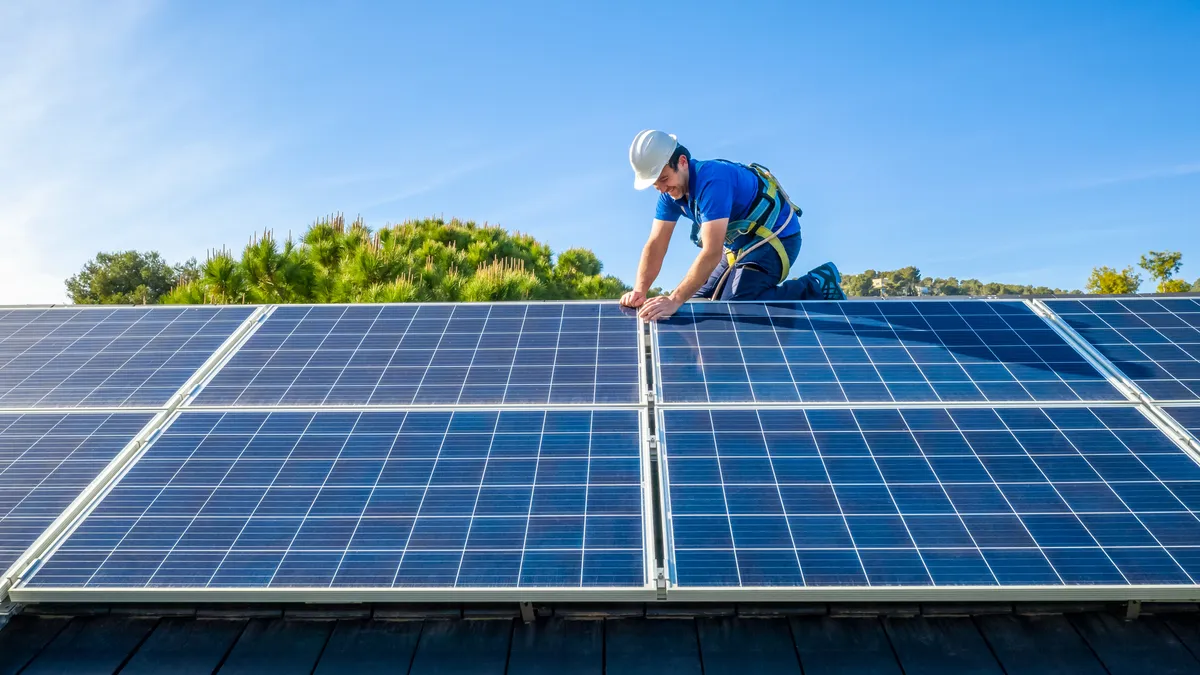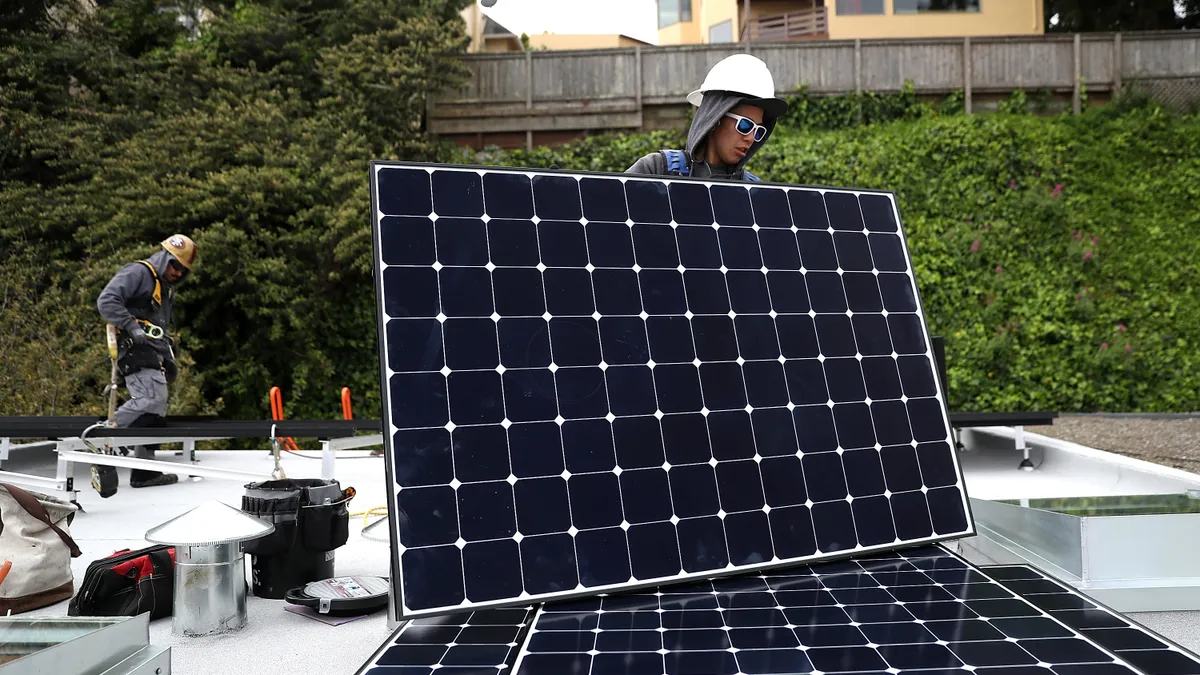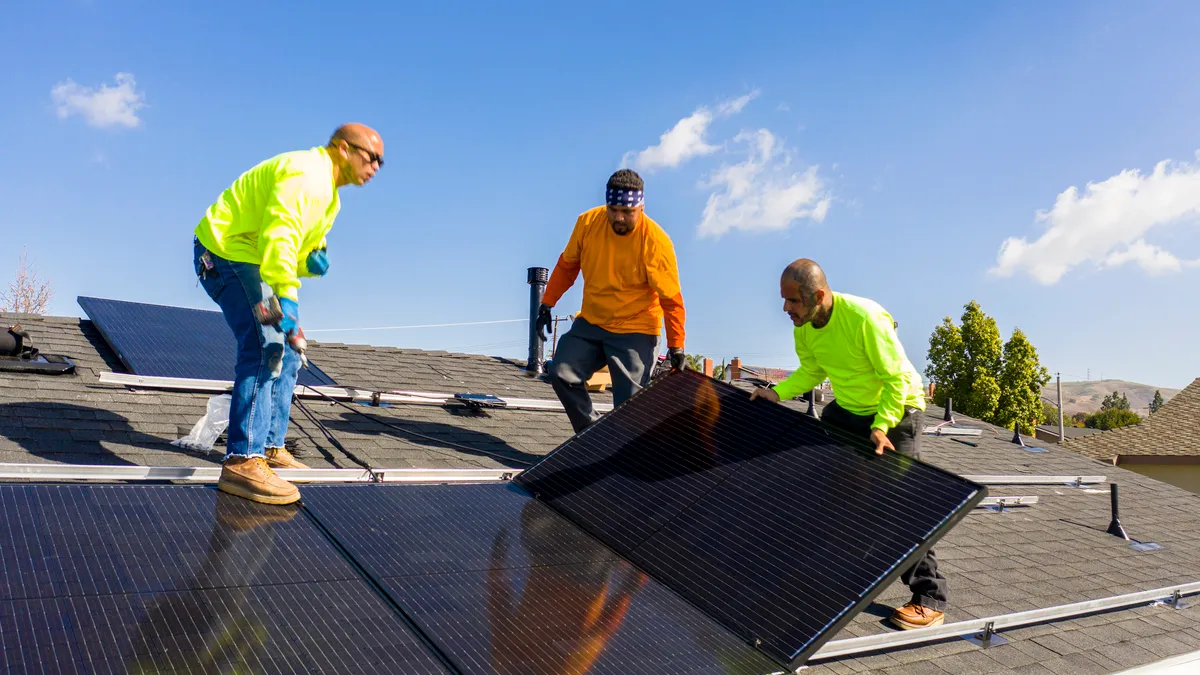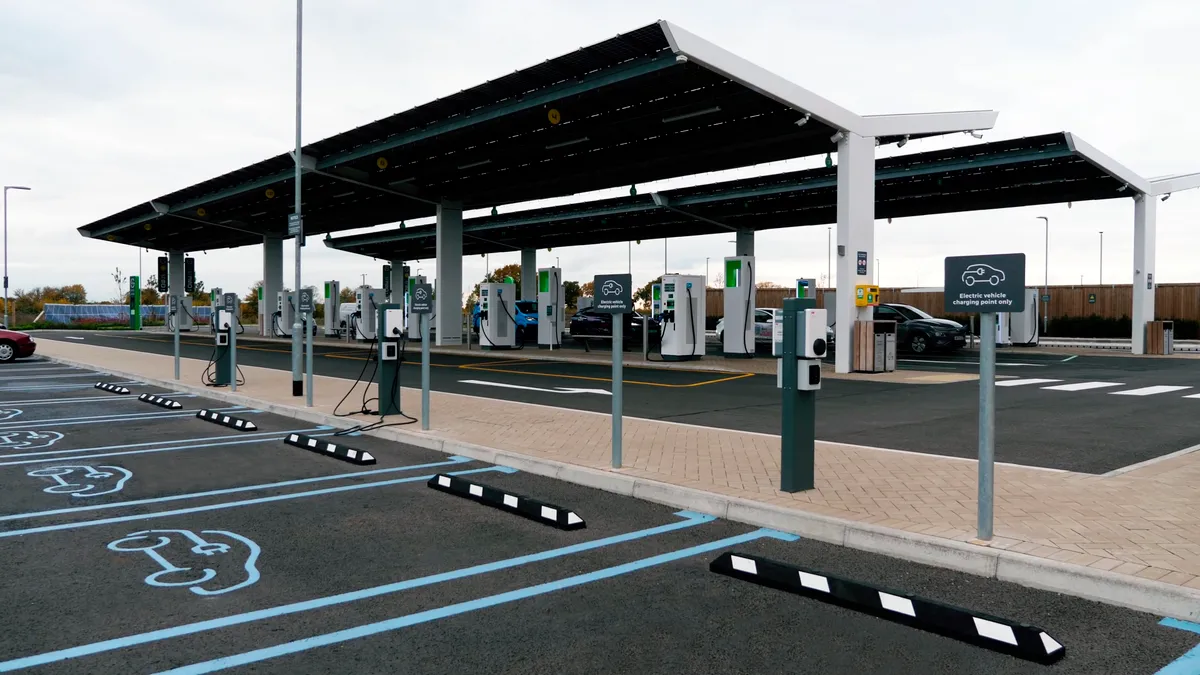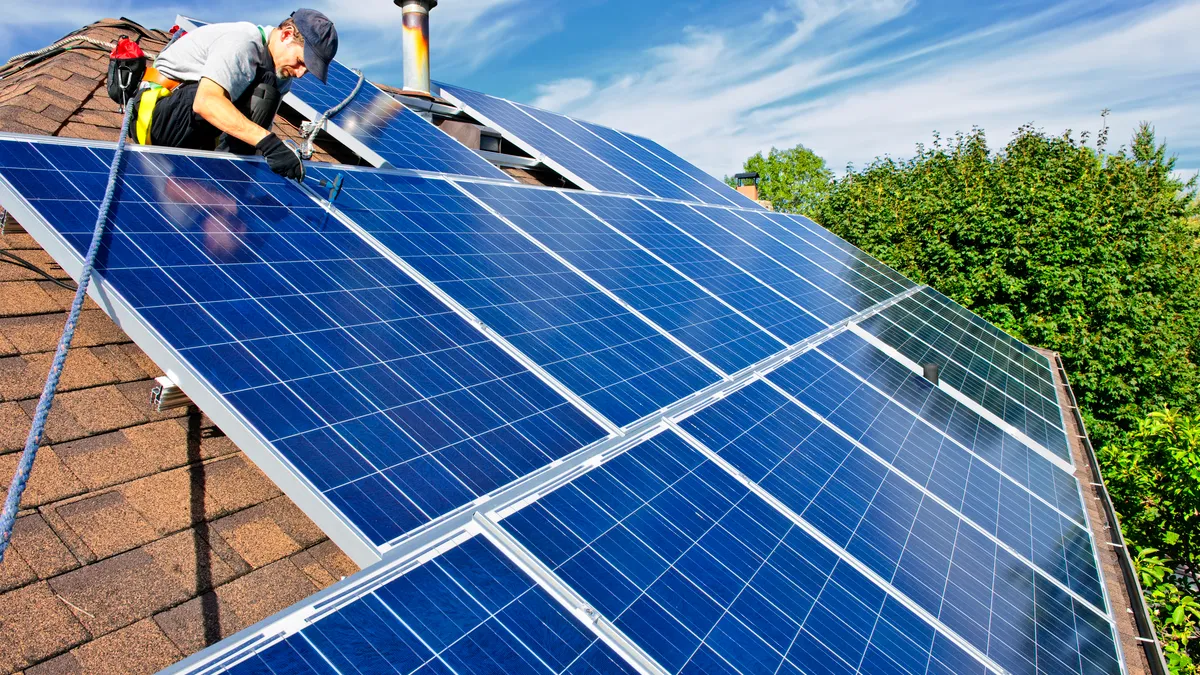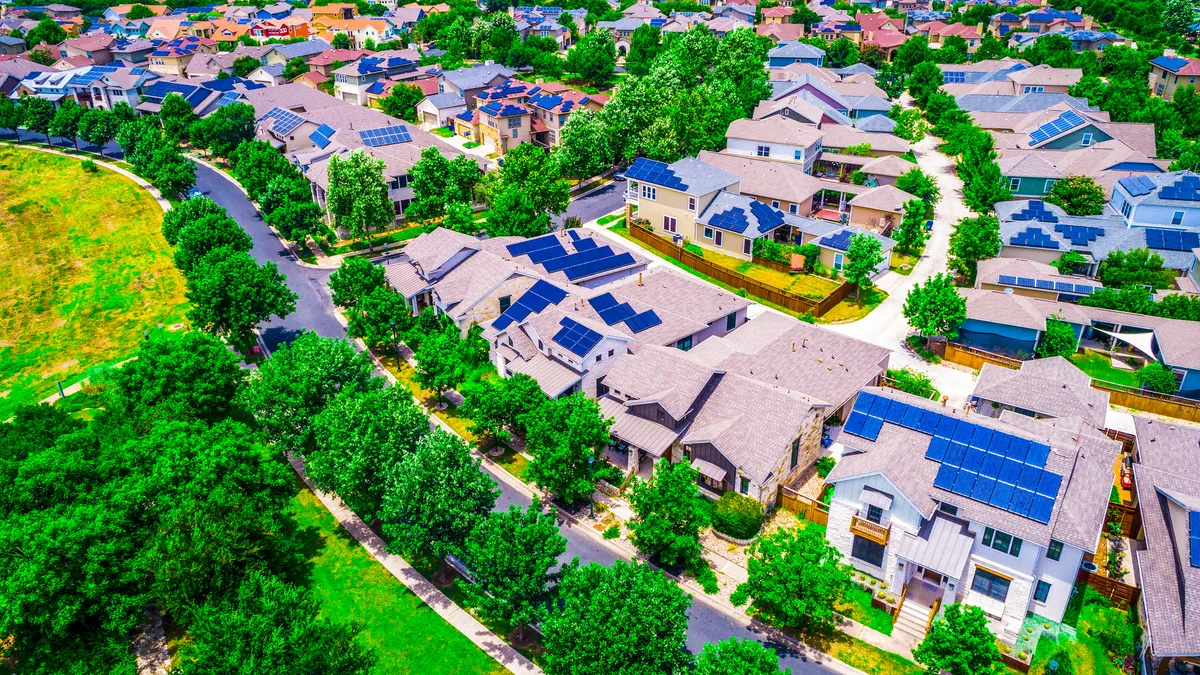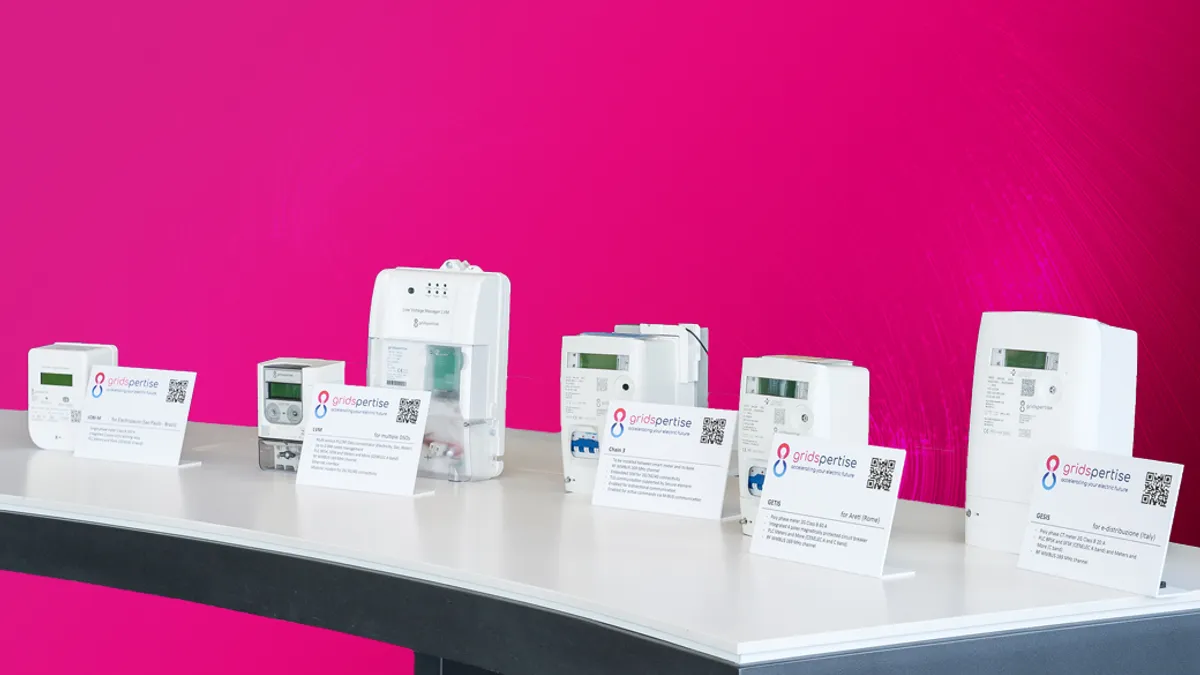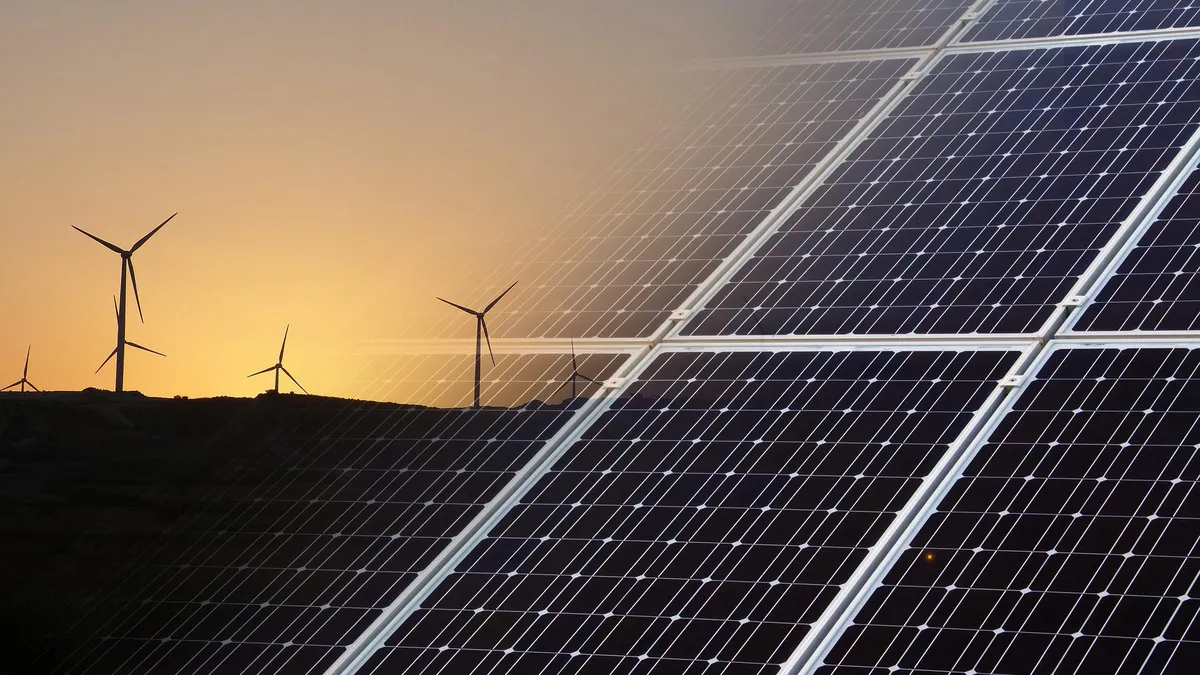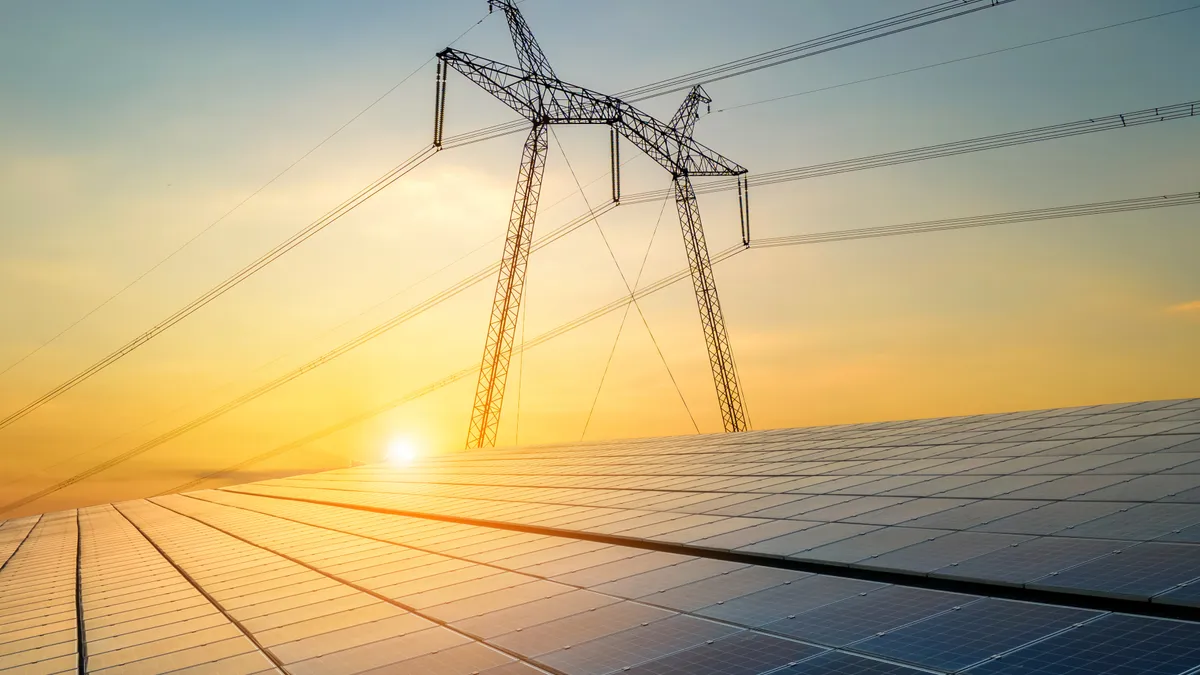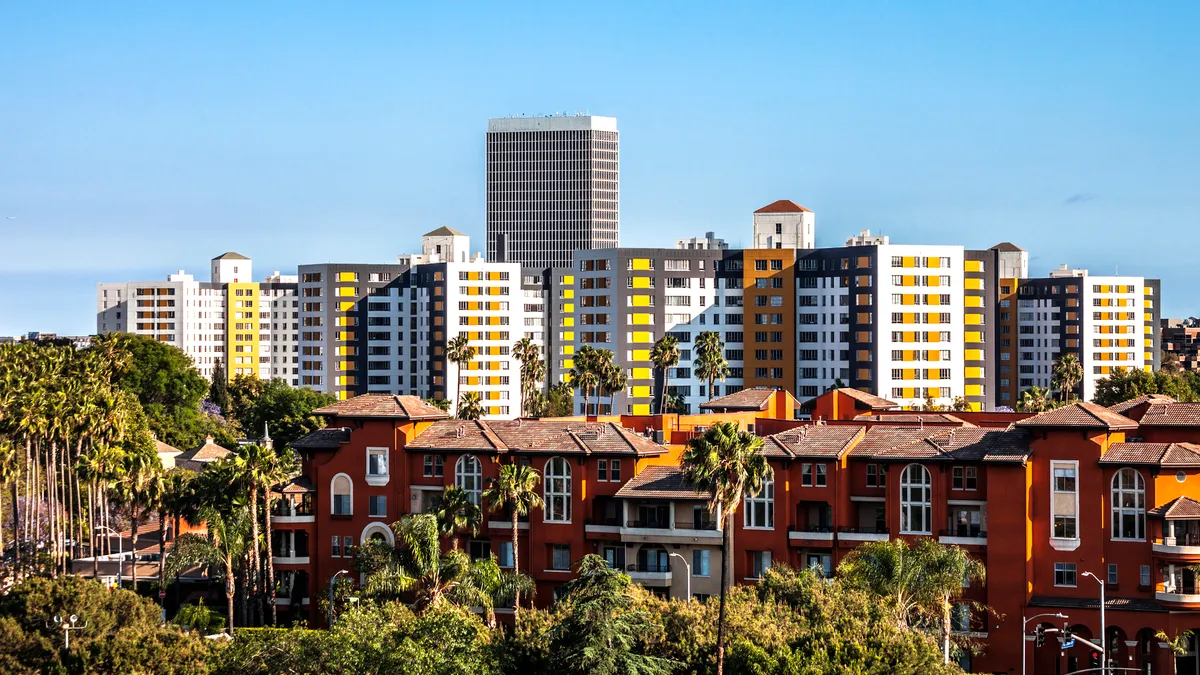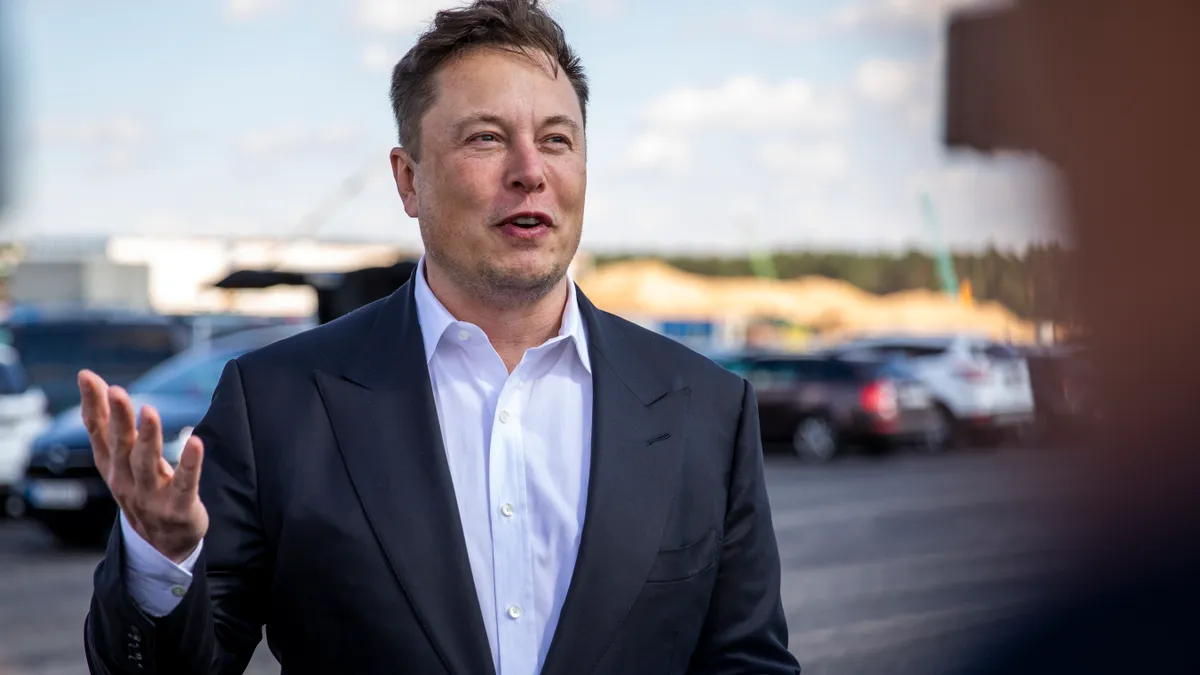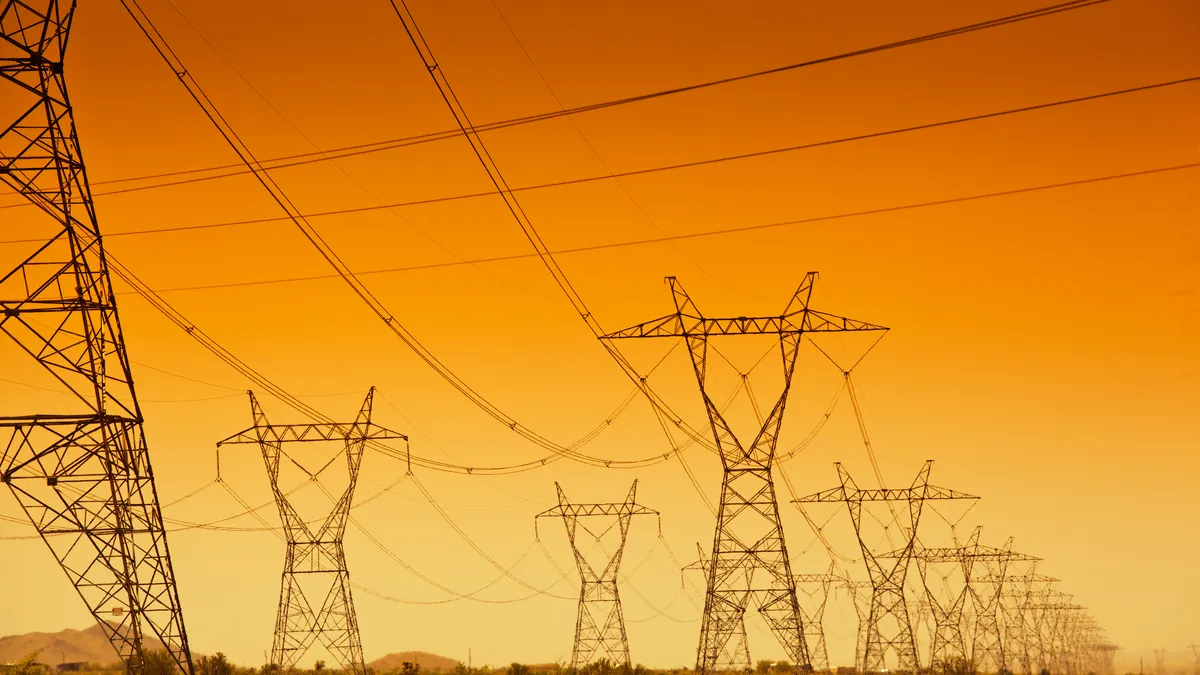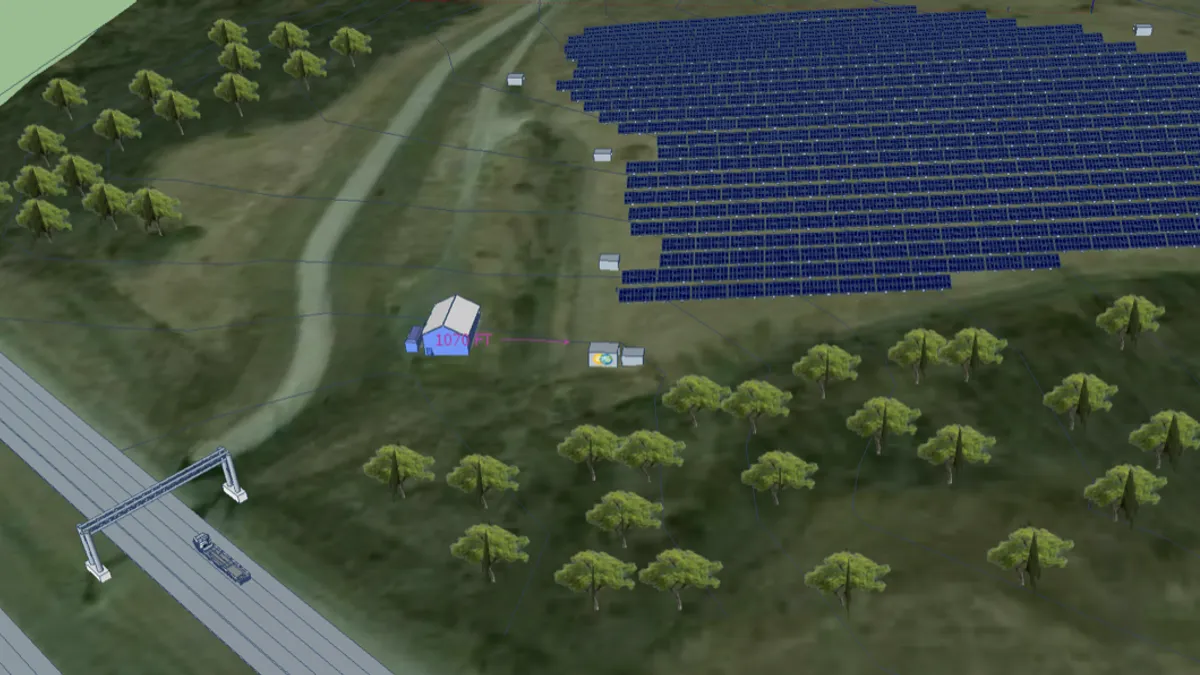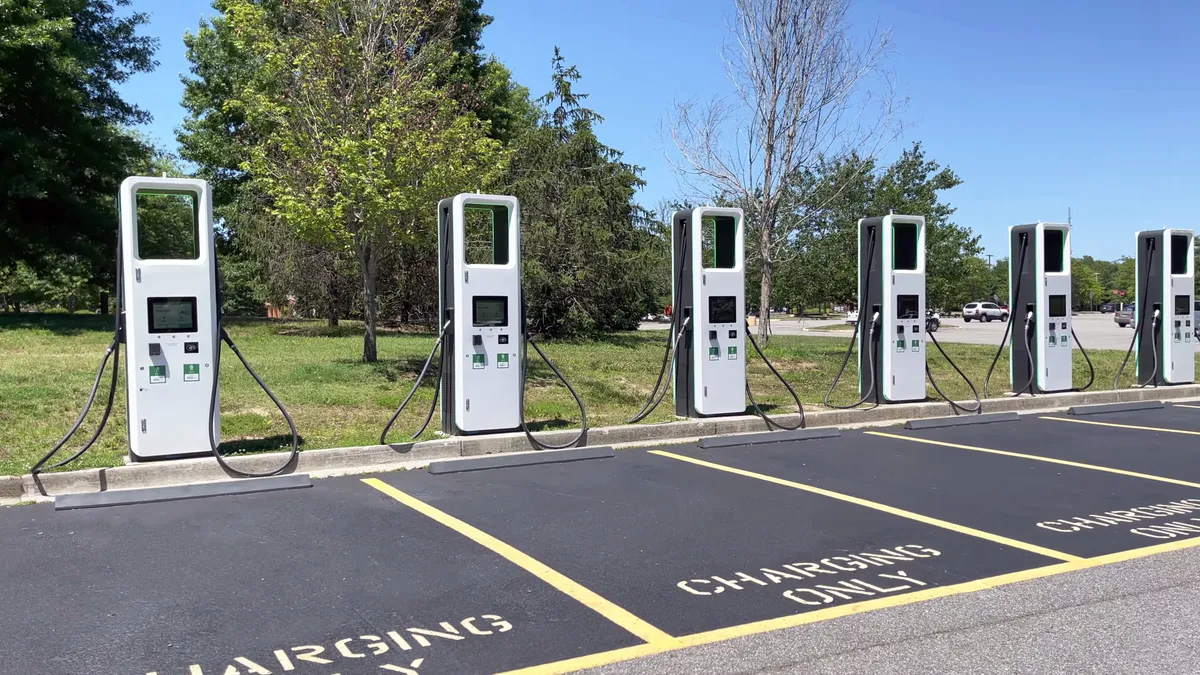Distributed Energy: Page 10
-
North Carolina eases transition from fixed to variable net metering rates for some Duke Energy customers
Solar panel installers worried that the variable rate would discourage customers from installing solar panels because variable rates are less predictable.
By Patrick Cooley • April 21, 2023 -
DOE offers Sunnova $3B partial loan guarantee for low-income solar, storage
It would be the first time that the agency’s Loan Programs Office has guaranteed a collection of small assets, LPO Director Jigar Shah said.
By Diana DiGangi • April 21, 2023 -
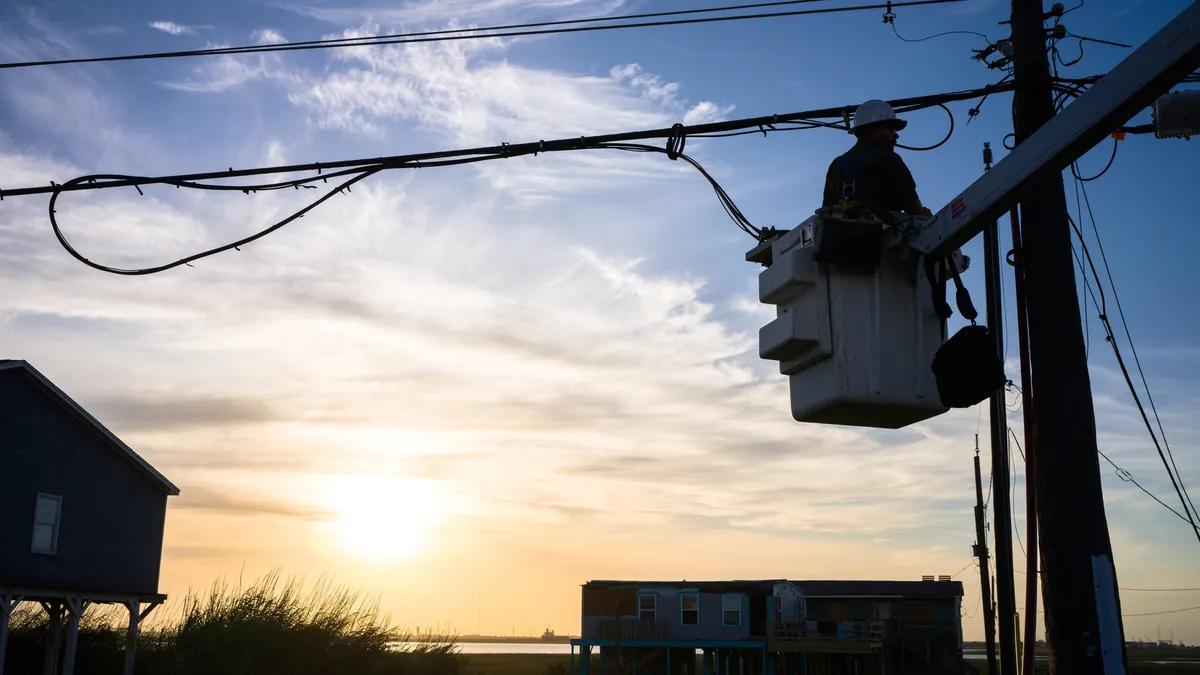 Explore the Trendline➔
Explore the Trendline➔
 Brandon Bell/Getty Images via Getty Images
Brandon Bell/Getty Images via Getty Images Trendline
TrendlineAI in the Power Sector
Artificial intelligence is uniquely positioned to impact the electricity industry from both ends: as the technology driving large load demand growth and as a tool with the potential to make the power system more efficient.
By Utility Dive staff -
Sunrun, others adapt as California’s new net metering rules spur booming interest in energy storage
The attachment rates of storage systems to distributed solar in California are projected to increase from around 11% today to over 80% by 2027, according to Wood Mackenzie.
By Kavya Balaraman • April 20, 2023 -
Deep Dive
With looming EV load spikes, PG&E, Duke, other utilities adopt new rate design and cost recovery strategies
New dynamic time-varying rates and demand charge adjustments from California to the Carolinas could align customer usage with utility costs to make EVs a system benefit, rate design experts said
By Herman K. Trabish • April 18, 2023 -
North Carolina forges new path on net metering as other states cut rooftop solar incentives
State regulators partially accepted a deal worked out by Duke Energy and other stakeholders that includes a variable payment approach to net metering based on overall electricity demand on the grid.
By Patrick Cooley • March 31, 2023 -
California, CPower, Enel, AutoGrid, Voltus dominate virtual power plant market: WoodMac
Nearly a quarter of the virtual power plant projects in North America are located in California, according to a new report by Wood Mackenzie.
By Emma Penrod • March 31, 2023 -
Sponsored by Gridspertise
A new era for smart meters: shifting intelligence to the Edge
The new generation of smart meters that are being developed by Gridspertise are the core of this innovation, since data management is performed both in the cloud and at the edge, closer to the source, enabling near-real time response.
March 20, 2023 -
Deep Dive
Treasury Department guidance urgently needed to tap IRA’s clean energy ‘gold mine,’ analysts say
Clarifications defining Inflation Reduction Act provisions on labor, domestic content, energy community, and clean hydrogen are urgently needed to put the “boldest action” by Congress to work, they say.
By Herman K. Trabish • March 16, 2023 -
Deep Dive
Duke, APS planning reforms show ways to work with stakeholders to meet emerging power system needs
Integrated planning with deeper modeling and greater stakeholder engagement may slow overburdened regulators and utilities now, but will lead to better long-term decision-making, planners and analysts agree.
By Herman K. Trabish • Feb. 28, 2023 -
CPUC poised to reject Sunnova’s plan to build microgrids in new residential communities
Sunnova’s proposal involves owning and operating microgrids as part of new, master-planned residential communities that would include up to 2,000 homes and some non-residential facilities.
By Kavya Balaraman • Feb. 21, 2023 -
Deep Dive
New power system cybersecurity architectures can be ‘vaults’ against insider attacks, analysts say
Utility operations facing hackers now, and a future of minimally-protected distributed energy resources, will need smarter, more complex defenses, from control rooms to customer-owned devices, analysts said.
By Herman K. Trabish • Feb. 17, 2023 -


istockphoto.com/ArisSu
 Sponsored by Sense
Sponsored by SenseUtility regulators must make smart decisions about smart meters: delays could be costly to consumers
For the first time ever, energy consumers and the technology providers that serve them have access to real-time energy data.
By Colin Gibbs, VP Energy Services, Sense • Feb. 13, 2023 -
US microgrid market to grow 19% annually through 2027, Wood Mackenzie projects
Microgrids continue to add capacity as green initiatives spur development, but high costs associated with renewable technology remain a challenge, a Wood Mackenzie analyst said.
By Henrik Nilsson • Feb. 8, 2023 -
Sponsored by Gridspertise
Quantum Edge® Device: the all in one solutions that provides unmatched benefits for Electric Utilities
Grid complexity is increasing, and DSOs are now facing new challenges such as unpredictable bidirectional power flow, MV harmonic pollution and grid management revolution. Thanks to its multi-purposes concept QEd is the keystone to merge OT and IT ecosystems to maximize the resiliency and efficiency of the grid while simplifying maintenance operations and improving network sustainability.
Feb. 7, 2023 -
Sunrun, PG&E to roll out 30-MW virtual power plant to support California grid in the summer
Sunrun will create the virtual power plant by enrolling up to 7,500 existing and new rooftop solar and battery systems in PG&E’s footprint.
By Kavya Balaraman • Feb. 7, 2023 -
Sunrun partners with startup Lunar Energy to operate nationwide portfolio of virtual power plants
Under the terms of the deal, Lunar’s aggregation software will coordinate energy from assets installed by Sunrun to sell blocks of energy to utilities and on wholesale markets.
By Emma Penrod • Feb. 3, 2023 -
Demand for Tesla storage products exceeds supply as Q4 deployments rise 152% to 2.5 GWh
Tesla deployed 6.5 GWh of storage in 2022, “by far the highest level of deployments we have achieved,” the company said.
By Robert Walton • Jan. 26, 2023 -
2023 US Power Sector Outlook
2023 promises to be another busy year for the U.S. energy transition as stakeholders move to implement new clean energy measures while tackling growing security, reliability, equity and affordability challenges.
By The Utility Dive Team • Jan. 25, 2023 -
As Puerto Rico moves to privatize generation, DOE study outlines 3 pathways to 100% renewables
By law, Puerto Rico must achieve 100% renewable electricity by 2050. “There is no space for building more natural gas assets,” a senior official at the U.S. Department of Energy said Friday.
By Robert Walton • Jan. 24, 2023 -
Deep Dive
3 big advances coming as distributed energy resources take newer, bigger roles in 2023
Analysts foresee DER growth in 2023 at the wholesale market and retail distribution system levels as communities and local leaders demand more reliability and resilience.
By Herman K. Trabish • Jan. 23, 2023 -
Opinion
California PUC’s delay of microgrids program harms disadvantaged communities
This delay in community microgrid development means more vulnerability to heat waves, wildfires, power shutoffs and pollution, especially in frontline communities.
By Stephanie Doyle and Shina Robinson • Jan. 18, 2023 -
Small modular reactors could hold key to electrifying heavy transport: Michigan study
Distributed energy resources can help affordably reduce emissions associated with heavy-duty vehicles, relative to building traditional grid infrastructure.
By Robert Walton • Jan. 18, 2023 -


stock.adobe.com/BASILICOSTUDIO STOCK
 Sponsored by Camus Energy
Sponsored by Camus EnergyConsumers as partners: The evolving utility business model
How is the utility business model evolving with wide-scale adoption of DERs?
Jan. 17, 2023 -
RMI partners with General Motors, Google Nest for initiative to promote and support virtual power plants
A coalition launched Tuesday aims to spur broader adoption of the virtual power plant concept by bringing together distributed energy industry stakeholders and policymakers.
By Emma Penrod • Jan. 11, 2023 -
Opinion
The hidden barrier to V2X: How states and utilities can open the floodgates for bidirectional EV charging
Avoid reinventing the wheel, minimize unnecessary review, and provide flexible service connection and interconnection options.
By Ed Burgess and Dan Bowerson • Dec. 22, 2022

